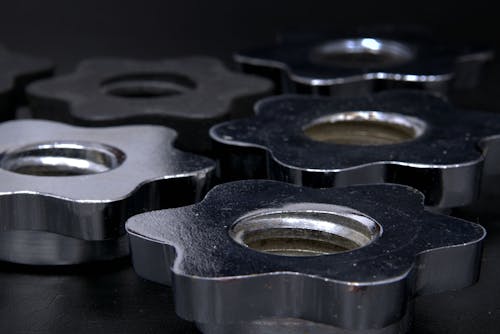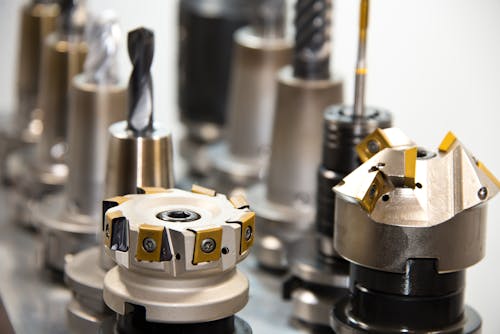Die casting is a manufacturing process ideal for producing items with intricate designs that demand precision and mass production. Metals that are suitable for the process include zinc, magnesium, and aluminum. In metal fabrication, the most prevalent comparison is zinc die casting vs. aluminum die casting.
The fundamental features and uses of each material are distinctive. However, the procedure enhances these qualities even more.
This article discusses zinc die casting and aluminum die casting so that you may learn about each and know which to use.
Differences Between Zinc Die Casting vs Aluminum Die Casting
Zinc and aluminum die casting both have special qualities that define the way they are used. The following are some typical criteria that might help you distinguish between the materials and pick the best one:

Weight
Zinc alloys are more durable and heavier than the majority of materials used in die casting because they have a high-density equivalent to that of steel. Aluminum has an exact density of 2.7g/cm3, whereas pure zinc has a density of 5g/cm3.
It is the material of choice for castings for structural purposes because of its high density, which also gives it more impact resistance than aluminum parts.
Properties
The mechanical qualities are the primary difference between zinc die casting and aluminum parts. The characteristics that both die-cast materials share and how they differ are listed below:
Melting Point
Zinc has a lower melting point (4200 °C) while being denser. The melting point plays an important role in die-casting since it affects the kind of die-casting technique that can be used. Zinc is more suitable for the hot chamber method because of its low melting point.
Additionally, it prevents mold degradation, enhances output, lowers production costs, and dictates the selection of casting techniques. Aluminum, on the other hand, has a greater melting point (6600 °C). Therefore, it is incompatible with the cold chamber technique, which raises cycle time as well as cost.
Thermal Conductivity
Zinc alloys are able to absorb and dissipate heat, making them a superior heat conductor than aluminum die casting. As a result, it is better suited for creating parts that generate a lot of heat or require heat to operate and be dissipated effectively.
When producing die-cast components for electronics or heat sinks, zinc castings perform better than aluminum ones.
Corrosion Resistance

Zinc castings are more corrosion-resistant than aluminum die-castings. The first choice is therefore better suited for undertakings with challenging environmental conditions.
Tooling Life
Due to the material’s lower melting point and less abrasive character, molds used in zinc die-casting need not be very sturdy. Mold damage and tooling costs are decreased as a result of these characteristics (less abrasiveness and a low melting point). Therefore, compared to aluminum’s 100,000 shots, zinc-casting molds can withstand over 1,000,000 shots.
Surface Finishing
Die castings may require additional surface finishing techniques, unlike CNC machined parts. In addition to the procedure, the type of material affects whether a part needs to be surface finished.
In contrast to aluminum, which can create pores during casting, zinc castings are free of pores after casting, as evidenced by their smoother/patterned surface. Aluminum casting thus needs appropriate surface finishing options.
However, surface polishing is an option for both castings. Additionally, zinc works well with methods of surface finishing like plating, powder coating, anodizing, electroplating, and painting.
Applications
Both materials can be used in various sectors. Aluminum casting is weaker than zinc casting. They are the most popular die-casting choices for household appliances and automobiles. On the other hand, aluminum castings’ strength-to-weight ratio makes them a superior material when lightweight and robust pieces are required. This is an essential requirement for using aluminum castings in the military sector.
Cycle Time
The cycle time is an important consideration to take into account when comparing zinc die casting against aluminum die casting. In comparison with aluminum die-casting, zinc die-casting works under high pressure and at a low melting point. It has a short cycle time as a result (the cycle rate of zinc casting is 150–200% higher than aluminum).
Furthermore, unlike aluminum die-casting, which relies on the cold chamber method, zinc die-casting heats up internally. In addition, zinc casting’s effective heat dissipation causes the molten metal to solidify more quickly. The cycle time will shorten as a result.
Costs
Manufacturing costs vary depending on several variables, including material costs, manufacturing methods, operator expertise, cycle times, surface finishing, etc.
| Zinc Die Casting | Aluminum Die Casting | |
| Weight | Higher | High |
| Melting point | Low | High |
| Thermal conductivity | High | Low |
| Corrosion resistance | Higher | Low |
| Tooling life | High tool longevity | Low tool longevity |
| Surface finishing | Low | High |
| Applications | Automotive, marine, electronic industry.Power steering systemEngine componentFuel System | Aerospace, house appliances, medical,automotive. Lawnmower partsPower toolsAutomotive components |
| Cycle time | Ten times higher | High |
| Costs | High | Low |
When to Choose Zinc Die Casting and Why?
The following are some factors that favor zinc die casting over aluminum die casting if you ever find yourself confused between the two.
Thin Wall Parts
Zinc die casting works well for producing parts with thin walls since it is stronger than other materials. You don’t need to worry about the structural durability of the part when using it because the material’s density contributes to its stability. Additionally, this will lower the cost of die-casting and material usage.
Environmental Hazards
It is possible to use zinc die casting in difficult environmental conditions, particularly those that can cause corrosion. The high corrosion resistance of the casting ensures the creation of a protective layer on the pieces when used in these circumstances.
Lesser Residual Stress
The molten metal is forced into the die during die casting by applying pressure. High-pressure and low-pressure die casting are the two pressure-based die casting methods; high-pressure die casting typically results in residual stress on parts.
Low-pressure die casting is used to produce zinc dies. This, therefore, decreases the residual tension on the parts.
Die-Cast Mold
If you’re working with a delicate die-casting mold, go with zinc die-casting. This is so that they can survive approximately ten times longer than an aluminum die-casting mold. Furthermore, if you don’t have enough money to pay for the tooling expense, choose zinc die casting.
Faster Production
Due to their low melting point, zinc alloys need to be cast in hot chamber dies using high-pressure injection. This will boost the cycle rate higher than other materials. In contrast to aluminum die casting, where the operator must first melt the metal outside the machine before pouring it into the injection machine, zinc is melted inside the die casting machine.
When to Choose Aluminum Die Casting and Why
The following are a few reasons why you should choose aluminum die casting over zinc die casting:
The Ratio of Strength to Weight
Die-cast aluminum components are renowned for being lightweight and having high tensile strength. As a result, you need to take them into account if you’re searching for such properties. Due to their small weight, aluminum die-cast parts are widely used in the aerospace sector.
High Operating Temperatures
Aluminum die castings are the ideal choice for high-temperature uses, including metallurgy. This is because of their high melting point, which guarantees that even when exposed to such high temperatures, they maintain their structural and physical characteristics.
Electrical Conductivity
Due to their high electrical conductivity, aluminum die-castings are preferable for a number of electrical die-cast components. For instance, protecting components from electromagnetic waves is essential for EMI shielding.
Conclusion

Aluminum and zinc die castings are robust and long-lasting. Understanding the inherent and die-casting-imposed qualities of the materials is necessary before selecting one. This article compares zinc die casting versus aluminum die casting so that you can successfully choose the best one for your project.








